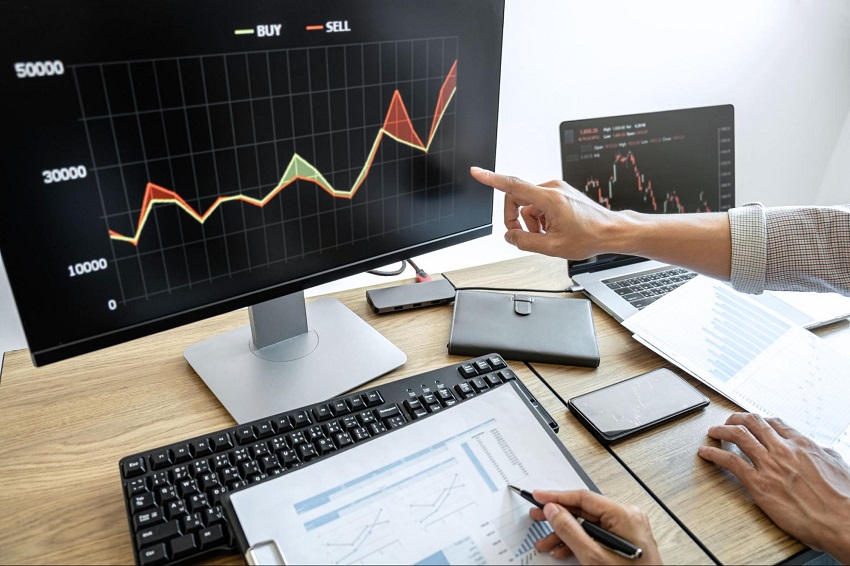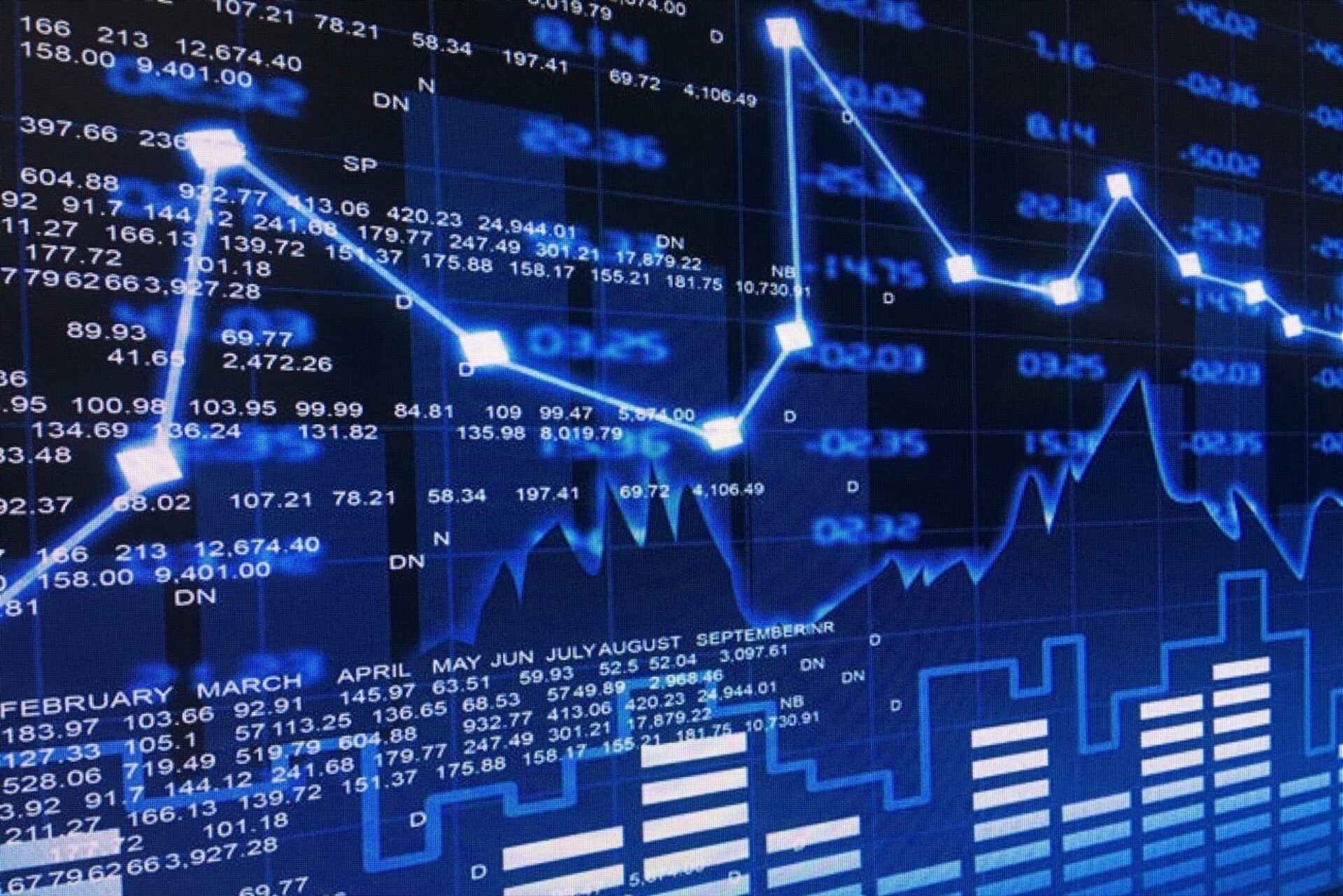Did you know that some traders use algorithms to make trades faster than you can say "buy low, sell high"? In the world of day trading, algorithmic trading has become a game-changer, offering both opportunities and challenges. This article dives into what algorithmic trading is, how it works, and its advantages and risks for day traders. We’ll explore strategies for choosing the right algorithm, the types of algorithms available, and essential tools and platforms to get started. Additionally, we'll cover important considerations like market volatility, capital requirements, and regulatory aspects. By the end, you'll have a clearer understanding of whether algorithmic trading can be profitable for you, courtesy of insights from DayTradingBusiness.
What is algorithmic trading in day trading?
Algorithmic trading in day trading uses computer algorithms to execute trades based on predefined criteria. It analyzes market data and makes rapid decisions to capitalize on small price fluctuations. Profitability depends on the algorithm's effectiveness, market conditions, and execution speed. While it can be profitable, it also carries risks, including technical failures and market volatility. Traders need to continuously refine their algorithms and strategies to maintain an edge.
How does algorithmic trading work for day traders?
Algorithmic trading for day traders uses computer programs to execute trades based on predefined criteria. These algorithms analyze market data, identify trading opportunities, and execute orders at high speed.
Profitability varies. Successful algorithmic trading depends on the quality of the algorithms, market conditions, and risk management. While it can lead to quick profits, it also carries significant risks. Day traders must continuously refine their strategies and adapt to changing markets to maintain profitability.
What are the advantages of algorithmic trading in day trading?
Algorithmic trading in day trading offers several advantages:
1. Speed: Algorithms can execute trades in milliseconds, seizing opportunities faster than human traders.
2. Precision: They minimize human error by following predefined rules for entry and exit points.
3. Backtesting: Traders can test strategies against historical data to evaluate potential profitability before live trading.
4. Consistency: Algorithms stick to the strategy without emotional interference, leading to disciplined trading.
5. Diversification: They can monitor multiple markets and assets simultaneously, spreading risk effectively.
6. Reduced Costs: Automated trading can lower transaction costs through efficient execution and reduced slippage.
These factors contribute to the potential profitability of algorithmic trading in day trading.
Can algorithmic trading guarantee profits in day trading?
No, algorithmic trading cannot guarantee profits in day trading. While algorithms can analyze data quickly and execute trades efficiently, market conditions are unpredictable. Losses can occur due to volatility, slippage, and changing trends. Successful algorithmic trading requires ongoing optimization and risk management, but there are no assurances of consistent profitability.
What are the risks of algorithmic trading for day traders?

Algorithmic trading for day traders carries several risks. First, there’s the potential for technical failures, like system crashes or connectivity issues, which can lead to significant losses. Second, algorithms may react poorly to unexpected market events, resulting in rapid losses if not monitored closely. Third, there's the risk of over-optimization, where strategies perform well on historical data but fail in real-time conditions. Additionally, day traders may face liquidity risks, as algorithms can exacerbate price movements during volatile periods. Finally, reliance on algorithms can lead to a lack of market understanding, making traders less prepared for manual intervention when needed.
How do I choose the right algorithmic trading strategy?
To choose the right algorithmic trading strategy for day trading, consider these steps:
1. Define Your Goals: Identify your profit targets, risk tolerance, and trading style.
2. Analyze Market Conditions: Research the market you’ll be trading in; different strategies perform better in varying conditions.
3. Backtest Strategies: Use historical data to test potential strategies for profitability and risk management.
4. Diversify: Consider multiple strategies to spread risk and increase chances of profitability.
5. Keep it Simple: Start with straightforward strategies to avoid overcomplication.
6. Continuous Improvement: Monitor performance and adapt your strategy based on market changes and results.
By following these steps, you can increase your chances of finding a profitable algorithmic trading strategy for day trading.
What types of algorithms are used in day trading?
Day trading often uses algorithms like trend-following, mean reversion, arbitrage, and market-making. Trend-following algorithms identify and capitalize on momentum, while mean reversion algorithms exploit price corrections. Arbitrage algorithms take advantage of price discrepancies across markets. Market-making algorithms provide liquidity by placing buy and sell orders. Profitability in day trading through these algorithms depends on market conditions, execution speed, and risk management strategies.
How can I start algorithmic trading for day trading?
To start algorithmic trading for day trading, follow these steps:
1. Learn the Basics: Understand trading concepts, market mechanics, and algorithms.
2. Choose a Trading Platform: Select a broker that supports algorithmic trading (e.g., Interactive Brokers, TD Ameritrade).
3. Develop a Strategy: Create or choose a trading strategy based on technical analysis or indicators.
4. Programming Skills: Learn a programming language like Python or use platforms with built-in tools (e.g., MetaTrader).
5. Backtesting: Test your algorithm on historical data to evaluate its performance.
6. Paper Trading: Use a demo account to simulate trading without real money.
7. Risk Management: Implement stop-loss orders and position sizing to protect your capital.
8. Go Live: Start trading with real money, but begin with small amounts to minimize risk.
Algorithmic trading can be profitable in day trading, but success depends on your strategy, market conditions, and risk management.
What tools and platforms support algorithmic trading?
Popular tools and platforms that support algorithmic trading include MetaTrader, NinjaTrader, TradeStation, and Interactive Brokers. These platforms offer features like backtesting, real-time data analysis, and customizable algorithms. Additionally, programming languages such as Python and R are commonly used for developing trading algorithms. For day trading, platforms like QuantConnect and Alpaca provide cloud-based services for deploying strategies.
How do backtesting and optimization improve algorithmic trading?
Backtesting and optimization enhance algorithmic trading by allowing traders to test strategies against historical data, identifying what works and what doesn’t. This process reveals potential profitability and risk levels before real money is at stake. Optimization fine-tunes parameters for maximum performance, improving trade execution and decision-making. Together, they increase confidence in trading algorithms, ultimately boosting the chances of profitability in day trading.
What are common mistakes in algorithmic day trading?
Common mistakes in algorithmic day trading include:
1. Over-optimization: Tweaking algorithms too much based on historical data can lead to poor performance in real-time markets.
2. Ignoring market conditions: Failing to adapt strategies to changing market environments can result in significant losses.
3. Lack of risk management: Not setting stop-loss orders or position limits can expose traders to excessive risk.
4. Poor backtesting: Using insufficient data or unrealistic assumptions during backtesting can create misleading results.
5. High-frequency trading pitfalls: Mismanaging latency and execution can lead to missed opportunities or slippage.
6. Emotional trading: Allowing emotions to influence algorithm adjustments can undermine systematic strategies.
7. Neglecting diversification: Relying too heavily on a single strategy or asset can increase risk.
Addressing these mistakes can enhance the profitability of algorithmic day trading.
Learn about What Are Common Mistakes in Institutional Day Trading?
How does market volatility affect algorithmic trading profitability?
Market volatility can significantly impact algorithmic trading profitability. High volatility often creates more trading opportunities, as prices fluctuate rapidly, allowing algorithms to capitalize on small price movements. However, increased volatility also raises the risk of losses due to potential price swings that can trigger stop-loss orders or lead to slippage. Algorithms designed to exploit volatility can be profitable, but their effectiveness depends on the market conditions and the strategies employed. In day trading, leveraging volatility can enhance returns, but it requires careful risk management to avoid substantial losses.
Learn about How Does Market Microstructure Affect Day Trading Strategies?
Is algorithmic trading suitable for beginner day traders?
Algorithmic trading can be suitable for beginner day traders if they have a solid understanding of trading principles and programming basics. While it offers advantages like speed and emotionless execution, beginners should be cautious. Profitability depends on strategy quality, market conditions, and risk management. New traders should start with simple algorithms and gradually advance as they gain experience. Testing strategies with paper trading before live trading is essential to minimize risks.
Learn about Is hedging suitable for beginner day traders?
How much capital do I need for algorithmic day trading?

To start algorithmic day trading, you typically need at least $25,000 in your trading account to meet the pattern day trader rule. However, more capital—between $50,000 to $100,000—is often recommended for better risk management and to cover potential losses. Profitability varies based on strategy, market conditions, and execution, so having sufficient capital helps absorb fluctuations.
What are the regulatory considerations for algorithmic trading?
Regulatory considerations for algorithmic trading include compliance with securities laws, ensuring transparency in trading algorithms, and adhering to market manipulation rules. Firms must register with regulatory bodies, like the SEC or CFTC in the U.S., and implement risk management protocols. They also need to conduct regular audits and maintain records of trading activities. Additionally, firms should ensure their algorithms are designed to prevent unethical practices, such as spoofing and layering.
How do I measure the success of my algorithmic trading strategies?
To measure the success of your algorithmic trading strategies, focus on these key metrics:
1. Return on Investment (ROI): Calculate your profit relative to your investment. A higher ROI indicates better performance.
2. Sharpe Ratio: This measures risk-adjusted return. A ratio above 1 is generally considered good.
3. Win Rate: Track the percentage of profitable trades. A higher win rate suggests a more effective strategy.
4. Maximum Drawdown: Assess the largest peak-to-trough decline in your portfolio. Lower drawdowns indicate better risk management.
5. Profit Factor: This is the ratio of gross profit to gross loss. A profit factor above 1 means you're making more on winning trades than losing on losing trades.
Regularly review these metrics to adapt and refine your strategies for better performance in day trading.
Learn about How to Measure Success in Day Trading Scalping
Conclusion about Is Algorithmic Trading Profitable in Day Trading?
In conclusion, algorithmic trading offers significant advantages for day traders, including speed, precision, and the ability to analyze vast amounts of data. However, it’s essential to recognize that while it can enhance profitability, it does not guarantee profits and carries inherent risks. Beginners should approach algorithmic trading with a clear strategy, appropriate tools, and a strong understanding of the market dynamics. By leveraging resources like DayTradingBusiness, traders can enhance their knowledge and improve their chances of success in this complex arena.
Learn about What Are Algorithmic Trading Strategies in Day Trading?
Sources:
- A Profitable Day Trading Strategy For The U.S. Equity Market by ...
- Algorithmic trading: Intraday profitability and trading behavior ...
- A profitable trading algorithm for cryptocurrencies using a Neural ...
- Beat the Market An Effective Intraday Momentum Strategy for ...
- Judgment day: Algorithmic trading around the Swiss franc cap removal